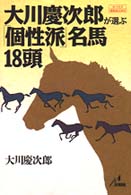- ホーム
- > 洋書
- > 英文書
- > Science / Mathematics
Full Description
There have been at least ten English-language textbooks of palaeobotany since D. H. Scott published the first edition of Studies inFossilBotany in 1900. Most have been written by scientists who were primarily botanists by training, and were aimed largely at a readership familiar with living plants. They tended to follow a general pattern of an introductory chapter on preservation of plants as fossils, followed by a systematic treatment, group by group. Only Seward in his Plant Life Through the Ages departed from this pattern in presenting a chronological sequence. In the present book, Meyen breaks with?is tradition. Although having a basically biological approach, he reaches out into all aspects of the history of plant life and the wider implication of its study. Only half of the present work deals sequentially with fossil plant groups, treated systematically. The remainder then explores those topics which most other textbooks have incidentally??e generally either ignored or have only mentioned rather problems of naming and classifying fragmentary plant fossils, their ecology; biogeography and palaeoclimatic significance and the contribution that?ey have made to the understanding of living plant morphology, and of the process of evolution.
Contents
1. Preservation types and techniques of study of fossil plants.- 2. Principles of typology and of nomenclature of fossil plants.- Parataxa and eutaxa.- Taxa and characters.- Peculiarity of the taxonomy and nomenclature of fossil plants.- The binary (dual) system of fossil plants.- The reasons for the inflation of generic names.- The species problem in palaeobotany.- The polytypic concept of the species.- Assemblage-genera and assemblage-species.- The cladistic methods.- 3. Fossil plants systematics.- I. Prokaryotes.- Division Bacteriophyta (Bacteriae).- Division Cyanophyta (Cyanobacteria).- Calcareous fossils of algal origin.- Stromatolites (Stromatolithi).- Oncolites (Oncolithi).- II. Eukaryotes.- Division Pyrjrophyta (Dinoflagellates).- Class Dinophyceae (Dinophytes).- Class Ebriophyceae (ebridians).- Division Chrysophyta (Chrysophycophyta). Golden algae Coccolithophores (subclass Coccolithophoridophycidae) and other nannoliths.- Sublass Silieoflagellatophycidae (silicoflagellates).- Division Bacillariophyta (Diatomeae).- Division Phaeophyta. Brown algae.- Division Rhodophyta (Rhodophycophyta). Red algae.- Division Chlorophyta (Chlorophycophyta). Green algae.- Division Charophyta.- Fungi.- Acritarcha and Cryptarcha.- Higher Plants.- Division Bryophyta.- Class Hepaticopsida (Marchantiopsida).- Class Bryopsida (Musei).- Division Propteridophyta.- Class Rhyniopsida.- Order Rhyniales.- Order Trimerophytales (Psilophytales).- Class Zosterophyllopsida.- Class Horneophytopsida.- Satellite genera of the division Propteridophyta.- Division Pteridophyta.- Class Barinophytopsida.- Class Lycopodiopsida (Lycopsida).- Order Drepanophycales.- Order Lycopodiales.- Order Protolepidodendrales.- Order Isoetales.- Family Lepidocarpaceae; Family Sigillariaceae; Family Chaloneriaceae; Family Pleuromeiaceae; Family Isoetaceae (quill-worts).- Satellite genera of the order Isoetales.- Order Selaginellales.- Class Equisetopsida (Articulatae).- Subclass Bowmanitidae.- Subclass Equisetidae.- Order Calamostachyales.- Order Equisetales.- Family Tchernoviaceae; Family Gondwanostachyaceae; Family Echinostachyaceae; Family Equisetaceae; Other members.- Satellite genera of Equisetopsida.- Class Polypodiopsida (Pteropsida, Filicopsida). Ferns.- Order Cladoxylales.- Order Ibykales (= Iridopteridales).- Order Zygopteridales.- Family Rhacophytaceae; Family Stauropteridaceae; Family Zygopteridaceae.- Order Botryopteridales.- Family Botryopteridaceae; Family Tedeleaceae; Family Psalixochlaenaceae;Family Sermayaceae.- Order Marattiales.- Order Osmundales.- Order Polypodiales (Filicales).- Family Schizaeaceae; Family Gleicheniaceae; Family Cyatheaceae; Family Matoniaceae; Family Dipteridaceae; Family Polypodiaceae.- Order Marsiliales.- Order Salviniales.- Family Salviniaceae; Family Azollaceae.- Satellite genera of the class Polypodiopsida.- Class Progymnospermopsida.- Order Protopteridiales (= Aneurophytales).- Order Protopityales.- Order Archaeopteridales.- Order Noeggerathiales.- Division Pinophyta (Gymnospermae).- Class Ginkgoopsida.- Order Calamopityales.- Order Callistophytales.- Order Peltaspermales.- Family Trichopityaceae; Family Peltaspermaceae; Family Cardiolepidaceae; Family Umkomasiacea (= Corystospermaceae); Satellite genera of the family Umkomasiaceae.- Order Ginkgoales.- Satellite genera of the order Ginkgoales.- Order Leptostrobales.- Order Caytoniales.- Order Gigantonomiales (= Gigantopteridales).- Order Arberiales (= Glossopteridales).- Order Pfentoxylales.- Class Cycadopsida.- Order Lagenostomales.- Order Trigonocarpales.- Order Cycadales.- Satellite genera of the order Cycadales.- Order Bennettitales.- Family Bennettitaceae; Family Williamsoniaceae.- Satellite genera of the classes Ginkgoopsida and Cycadopsida.- Class Pinopsida (Coniferopsida).- Order Cordaitanthales.- Family Cordaitanthaceae; Family Vojnovskyaceae; Family Rufloriaceae.- Satellite genera of the order Cordaitanthales.- Order Dicranophyllales.- Order Pinales (conifers).- Family Lebachiaceae; Family Buriadiaceae; Family Voltziaceae; Family Cheirolepidiaceae; Family Palyssiaceae; Family Araucariaceae; Family Pinaceae; Family Taxodiaceae; Family Cupressaceae; Family Podocarpaceae; Family Taxaceae; Family Cephalotaxaceae.- Satellite genera of the order Pinales.- Form genera of vegetative shoots.- Satellite genera of the division Pinophyta.- Genera for wood fragments;.- Dispersed seeds.- Division Magnoliophyta (Angiospermae).- Classification of dispersed leaves.- Probable ancestors of angiosperms.- The oldest angiosperms.- 4. Palaeopalynology.- Certain conceptions and terms.- Taxonomy of dispersed miospores.- Correlations between miospore parataxa and eutaxa.- Morphological evolution of miospores.- Dispersed megaspores.- 5. Epidermal-cuticular studies.- Pertinent characters used in ECS.- Systematic significance of the characters.- Evolution of the epidermal-cuticular characters.- Classification of dispersed cuticles.- 6. Plant palaeoecology.- 7. Palaeofloristics.- History of floras.- The rise of land vegetation.- Silurian-Devonian floras.- Carboniferous and Permian floras.- Transition from Palaeophyte to Mesophyte.- Triassic floras.- Jurassic and Lower Cretaceous floras.- Transition from Mesophyte to Cenophyte. Upper Cretaceous floras.- Cainozoic floras (by M. A. Akhmetyev).- Salient features of the Cainozoic palaeofloristics. Major phytochoria.- Major features of florogeny.- 8. Relationship between palaeobotany and other fields of natural history.- Stratigraphy.- Lithology.- Palaeoclimatology.- Tectonics and plate movement.- Palaeobotany and the theory of evolution.- Palaeobotany and plant morphology.- References.


















